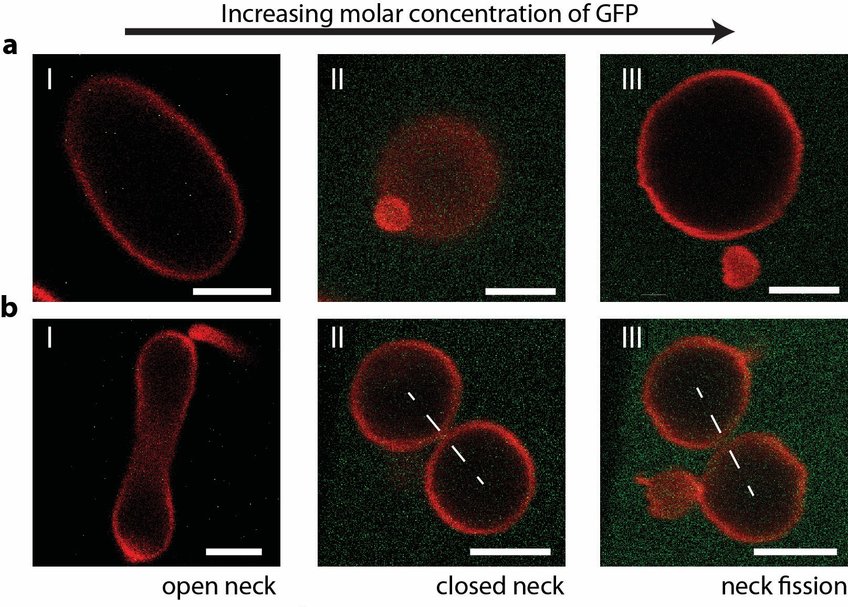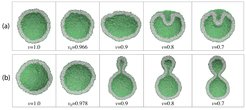
Synthetic Biosystems
In the last years, the group focussed on the remodeling of biomembranes.
Two types of synthetic membrane compartments have been studied: giant unilamellar vesicles (GUVs) with a size of tens of micrometers and nanovesicles (NVs) with a size of tens of nanometers. The studies of GUVs were based on the fruitful interplay between the theory of curvature elasticity and experimental observations by optical microscopy. The investigations of NVs were pursued via molecular dynamics simulations.
Remodeling of giant vesicles
For GUVs, fine-tuning of the spontaneous curvature has been achieved by low densities of membrane-bound green fluorescent protein (GFP), which allowed the controlled division of such vesicles as shown in the picture above. This division process represents a milestone for the bottom-up approach to synthetic biology.
Additional studies on GUVS described (i) the creation of multispherical GUV shapes which demonstrated the complex energy landscapes of these vesicles; and (ii) active shape oscillations of GUVs generated by Min proteins. Shreya Pramanik worked on her doctoral project to elucidate the binding of His-tagged molecules to giant vesicles.
Remodeling of nanovesicles
For nanovesicles (NVs), the mechanical tensions, S1 and S2, of the two leaflets have been identified as key parameters that control the NV morphology. To avoid membrane rupture, we focussed on bilayer membranes, for which the bilayer tension S = S1 + S2 is close to zero. For such a tensionless bilayer, the leaflet tensions satisfy S2 = - S1 , which implies that one leaflet is stretched by a positive tension whereas the other leaflet is compressed by a negative tension. The leaflet tensions can be directly controlled in simulations by the number of lipids that are initially assembled in each leaflet.

Additional studies of NVs revealed (i) that a multicomponent bilayer with a flip-flopping lipid species can relax towards a reference state in which both leaflet tensions vanish; and (ii) that shape transformations as in Figure 2 can also be induced by the adsorption of small solutes onto the NV membrane. Miftakh Zamaletdinov worked on his doctoral project to determine how the behavior of NVs depends on their size.
The results for both GUVs and NVs were summarized in a recent review.
